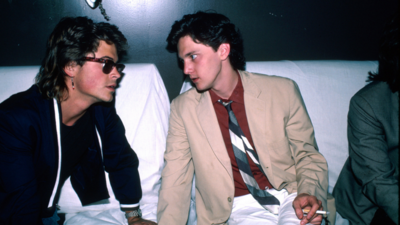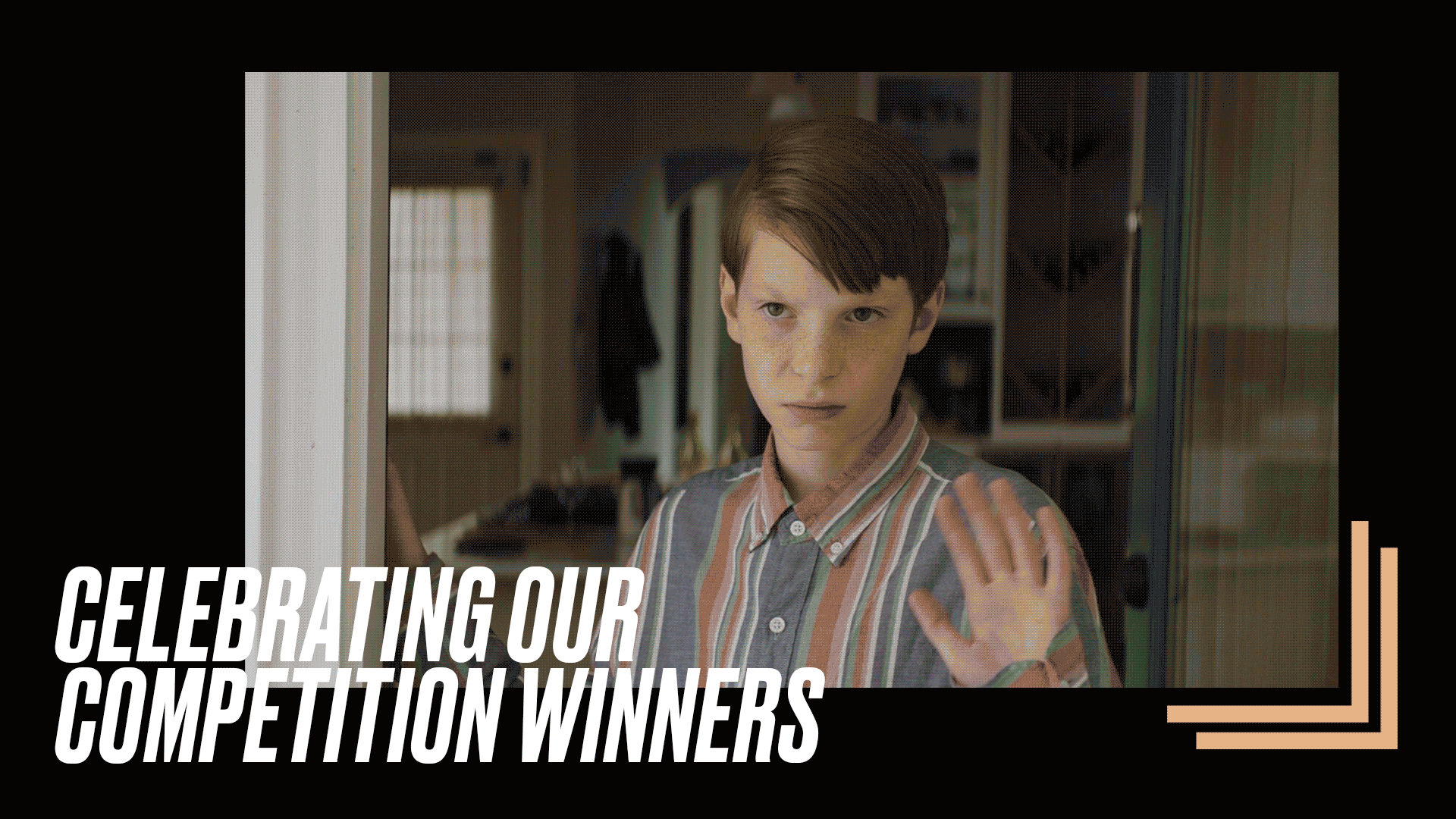
BY KAREN KEMMERLE |
The Face That Launched A Thousand Lawsuits
Director Andrew Shea thrillingly traces the twisted and complex history of Egon Schiele's iconic painting Portrait of Wally in his new documentary, which plays like an unfolding mystery. Opens Friday, May 11 at Quad Cinema.

Update: Portrait of Wally opens in theaters this Friday, May 11 at the Quad Cinema in New York City.
Tribeca: Tell us a little about Portrait of Wally. How would you describe the movie?
Andrew Shea: Portrait of Wally is about the complex and emotional history of the Bondis family's effort to recover a portrait by Egon Schiele that was stolen from Lea Bondi, a Jewish art gallery owner, by Nazis in the latest 1930s. The film documents Lea’s efforts to recover the painting throughout the rest of her life, and the continued battle by her great -nieces and -nephews and other parties to restore the painting to the Bondi family.
My goal was for the film to chronicle the legal proceedings efficiently without overwhelming the human dimensions, because, after all, the emotional resolve of the family members is what makes the film powerful. The story of the theft of the painting provokes a sense of loss and a sense of outrage not just from the family, but from so many people in Europe and the United States who are so passionate about this story.
Tribeca: How did the famous case that is the subject of Portrait of Wally first come to your attention? What about the case inspired you to tell this story?
ANDREW SHEA: My interest in the case, or story, developed through my friendship with David D'Arcy, a journalist and art critic, who has been reporting on restitution cases for many, many years. He followed this case since the late 1990s and wrote about it in the early 2000s. NPR fired him after he filed a story on this case on the occasion of MoMA’s reopening in early 2004. David brought the Bondis’ entire story, not just the case, to my attention four or five years ago. Soon after that, we began to talk about making a documentary about it.
Tribeca: That was 4 or 5 years ago, so how long have you been working on the film?
ANDREW SHEA: We first starting shooting in 2008, but the planning process began in Spring 2007. It’s been about 5 years. We have shot all over the world and did a lot of filming in New York as well. In that sense, it is very much a New York story, even though it starts in Europe and circles back. Many of the issues raised in the documentary are pertinent and compelling for American audiences.
Part of the reason filmmaking took so long was that people were not willing to talk to us when we first approached them. That was true for people on both sides of the dispute— Lea Bondi’s family members, U.S. attorneys, the Leopold family, the Leopold Foundation, and so on. Many of them wanted to wait until the legal case was resolved. We when started this project, we really didn’t know how long it would take to finish.
Tribeca: What is it about the paintings of Egon Schiele that made the value of his works increase so dramatically as compared to the works of other artists?
ANDREW SHEA: I’m not sure if I’m really qualified to answer that, because I’m not an art dealer or an expert by any means. My opinion is that as a fantastic artist with masterful techniques, he was able to get to the heart of his subjects and bring out their essential humanity through his work. Beyond that, the shock value of his subject matter is a factor in the increased interest in his works. Schiele’s paintings seem very contemporary, and I think modern audiences appreciate not just his sexualized work, but his landscapes and drawings as well, because they have such a modern feel. There’s always been an interest in Schiele, even in the film and television world.
Tribeca: I loved the editing of the documentary. For audiences that are unfamiliar with the art world, Portait of Wally unfolds like a mystery. I couldn’t wait to see what happened next. Can you talk a little bit about the editing process?
ANDREW SHEA: Sure. I’ve been working with my editor since we met in film school in the early 90s at USC, and we had collaborated on several projects before this one. Portrait of Wally is our third film together. I should mention that my editor is Melissa Shea, who is also my wife, so we work very closely together. For better or worse, while we worked on this film over the course of 4 or 5 years, we never stopped discussing the project. We never knew which of us would have an epiphany about a moment or a cut or the inspiration to try a new idea. And that’s good and bad [laughs]. I think we have been able to develop our professional relationship over the years separate from and in addition to our married life. We are not always successful, however, in keeping them separate. [laughs].
Tribeca: The use of archival footage for Portrait of Wally is extremely effective and adds to the richness of the film. Viewers feel as if they are on an actual journey over the course of history. How did you go about obtaining the footage?
ANDREW SHEA: We worked with an archival producer named Lewanne Jones, who is based in NYC. She’s very experienced and has been working on documentaries for many, many years. She has been one of our key collaborators since the very beginning of this project in 2008. She worked with many of the big commercial networks from all over the world, but she would also hunt down individuals to secure amazing footage that we could utilize.
My favorite of the archival footage that we found is now actually licensed by the Imperial War Museum in London. When it first came to our attention, however, a woman named Carolyn Keen was controlling it. Her grandfather had shot some very rare color footage of the blitz over London during the war, and I saw it on the evening news one night after it was just discovered.We got in touch with Carolyn Keen, but by that time she had already been contacted by the Imperial War Museum. We all came to an agreement that allowed us to incorporate the footage into the film.

TRIBECA: Some of the most compelling interviews that you included in PORTRAIT OF WALLY involve Lea Bondi’s relatives. How did you approach her family to get their participation?
ANDREW SHEA: Everyone from Lea Bondi’s family wanted to participate in the documentary, but they all had agreed to wait until the case was settled in court. They were always hoping to speak to us, and we were in touch with their attorney, Howard Spiegler, in New York. Howard actually ended up being an interview subject in the documentary as well. Throughout these years, the Bondi family still remained interested in talking to us. After the case was resolved, we finally got really great interviews from Andre Bondi, Lea’s great nephew and the American administrator for the plaintiff’s case, and from Lea Bondi’s grand niece, Ruth, who lives in Seattle now.
Lea Bondi had no children, so her nieces and nephews are her only living relatives. She was particularly close with her nephew Henry Bondi, who is in the film. Henry, who is Andre’s father, spearheaded the family’s efforts to recover the painting until his death in the early 2000s. Andre, here in the United States, took it over. There is a London branch of the Bondi family, the Southwells, that we never did interview. They were equally involved behind the scenes, and the U.S. government worked with the Bondis as well. This was not a simple civil matter; this was a complicated federal legal case.
TRIBECA: Despite the 19 million dollar settlement paid to Lea Bondi’s heirs, the resolution of the Portrait of Wally case is still controversial because the painting still hangs in Austria. Do you think justice was served? Why/why not?
ANDREW SHEA: Though I can’t speak for the families involved, I will say that it is a bittersweet resolution. I think for a family that has battled for almost 80 years to recover the painting, money was the least of it. For them, the acknowledgment of the true provenance of the painting was what was important. The acknowledgment that the painting was stolen and it remains the property of Lea Bondi and her heirs was the true victory. The United States government also invested significant resources in the case, so this wasn’t simply a private dispute between a family and a museum in Europe.
The painting is now back at the museum that was founded by the Schiele collector who acquired the portrait in the 1950s and battled with the family for decades. Had this case gone to trial, there certainly would have been an appeal by the “losing” party, and the matter would have dragged on another five years, at least. Family members are getting older, and they faced the problem that arises in many different restitution cases involving large families—the question of how to share the significant costs of the litigation.
Ultimately, the solution in these high profile restitution cases is to sell the painting, as was done here. Without giving you my view of whether justice was served, I prefer to let the film speak for itself. The film doesn’t actually take a position on this question, but the folks in the film give voice to the bittersweet quality of the resolution.
Tribeca: What are you most looking forward to at Tribeca?
ANDREW SHEA: We’ve been working on this film for so long that I’m really excited to finally put it in front of an audience. I’m confident and hopeful that people are really going to respond to the emotion and the power of the story behind the painting and to the Bondi family’s struggle. I’m very excited about that after almost five years of work.
Tribeca: If you could have dinner with any filmmaker (alive or dead), who would it be?
ANDREW SHEA: It would have to be Mike Leigh. He’s one of my heroes for the kind of work he does and the process that he has for developing his stories. I’ve always been inspired by him.
Tribeca: What’s your favorite New York movie?
ANDREW SHEA: My all-time favorite would have to be Rosemary’s Baby.
Tribeca: What makes PORTRAIT OF WALLY a must-see?
ANDREW SHEA: The fact that the story of this painting and its tortured history touched so many people so powerfully. It’s that emotional journey that is going make the film successful at Tribeca and beyond, I hope.
Portrait of Wally opens in theaters this Friday, May 11 at the Quad Cinema in New York City.
 Andrew Shea is an award-winning director and screenwriter who has enjoyed success in film, television, and theater. His films include Forfeit, which premiered at SXSW, The Corndog Man, which premiered at Sundance, and the short Take My Breath Away, which premiered at Cannes Critics Week.
Andrew Shea is an award-winning director and screenwriter who has enjoyed success in film, television, and theater. His films include Forfeit, which premiered at SXSW, The Corndog Man, which premiered at Sundance, and the short Take My Breath Away, which premiered at Cannes Critics Week.

